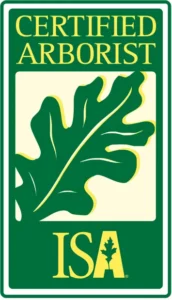How to Treat a Sick Tree
Trees are an essential part of the landscape, providing beauty, shade, and environmental benefits. However, just like any living organism, trees can sometimes become sick. Whether it’s due to disease, pests, or environmental stress, it’s important to identify the signs of a sick tree early and take steps to treat it. Here’s a simple guide on how to treat a sick tree and help it recover.
1. Identify the Symptoms of a Sick Tree
Before you can treat a sick tree, you need to identify the problem. Trees often show signs of illness through their leaves, bark, branches, or roots. Some common symptoms of a sick tree include:
- Discolored or yellowing leaves: This could indicate a nutrient deficiency, overwatering, or disease.
- Wilting or curled leaves: Signs of water stress or pest infestation.
- Browning or dead patches: This could suggest a fungal infection, disease, or severe pest damage.
- Visible pests: Check the leaves and bark for insects like aphids, scale, or beetles.
- Soft, decaying bark: Indicates rot or a fungal issue.
- Unusual growths: Fungus, mold, or odd bumps could indicate a disease like cankers or fungal infections.
- Cracked or peeling bark: Could be a sign of environmental stress, disease, or pests.
If you notice any of these signs, it’s time to take action.
2. Determine the Cause of the Problem
Once you spot the symptoms, try to determine the cause. Tree diseases, pests, environmental stress, and improper care can all contribute to a sick tree. Here are a few potential causes:
- Pests and Insects: Certain pests, like termites, beetles, and aphids, can damage trees by feeding on the leaves, bark, or roots. If you see visible pests, your tree may have an infestation.
- Tree Diseases: Common diseases like root rot, fungal infections, or canker diseases can affect trees. These diseases typically cause discolored leaves, lesions, or oozing sap.
- Environmental Stress: Factors like poor soil quality, too much or too little water, or excessive heat or cold can stress trees, causing them to weaken or become sick.
- Nutrient Deficiency: A lack of nutrients like nitrogen, phosphorus, or potassium can make a tree weak and prone to diseases and pests.
3. Trim Dead or Infected Branches
If you notice dead or infected branches, prune them as soon as possible. Cutting off diseased or dead wood helps prevent the spread of the disease to healthy parts of the tree. Always use sharp, clean pruning shears or saws to make clean cuts, and make sure to dispose of the infected branches properly.
- Cut just outside the branch collar (the slight bulge where the branch meets the trunk).
- Disinfect pruning tools between cuts to avoid spreading disease.
4. Treat for Pests
If you suspect pests are the problem, you’ll need to take steps to eliminate them. Depending on the type of pest, you may need to:
- Use an insecticidal soap or natural pest control: For minor infestations, consider using a non-toxic insecticidal soap or a neem oil spray, which can kill pests without harming the tree.
- Apply targeted treatments: For more severe infestations, you may need a stronger pesticide. Make sure to follow the instructions carefully and use the pesticide at the right time of year to ensure effectiveness.
- Encourage natural predators: Beneficial insects like ladybugs and lacewing larvae can help control certain pests, reducing the need for chemical treatments.
5. Improve Soil and Watering Conditions
Trees need the right amount of water and nutrients to stay healthy. If your tree is sick due to environmental stress or nutrient deficiencies, improve the soil and watering conditions:
- Watering: Ensure the tree is getting enough water, but not too much. Overwatering can drown the roots, while underwatering can stress the tree. Aim for deep, infrequent watering.
- Soil Quality: Test the soil for pH levels and nutrient deficiencies. If the soil is lacking nutrients, you can amend it with compost or a balanced fertilizer.
- Mulching: Apply mulch around the base of the tree to help retain moisture and protect the roots. Keep the mulch a few inches away from the trunk to avoid rot.
6. Apply Fungicide or Other Treatments
If you suspect a fungal infection, such as powdery mildew or root rot, applying a fungicide may help control the disease. Fungicides come in various forms, including sprays, soil drenches, and systemic treatments that are absorbed by the tree.
- Fungicides: Look for a fungicide that is specifically designed for the disease affecting your tree. Always follow the manufacturer’s instructions to ensure safe and effective use.
- Root treatments: If the issue is with the roots, you may need to apply a soil drench to treat the infection at its source.
7. Ensure Proper Tree Care Moving Forward
Once you have addressed the current issues, ensure proper care to prevent future problems. Healthy trees are more resilient to diseases and pests. Follow these general tree care tips:
- Fertilize regularly: Feed your tree with balanced fertilizer to promote healthy growth.
- Water deeply and consistently: Ensure your tree gets the right amount of water, especially during dry spells.
- Prune carefully: Regularly prune dead, damaged, or overcrowded branches to maintain a healthy tree structure.
- Monitor for pests and diseases: Keep an eye on your tree’s health, checking regularly for signs of pests or disease.
8. Seek Professional Help
If your tree is seriously ill, or if you’re unsure of the cause of the problem, it’s always a good idea to consult a professional arborist. An arborist can diagnose the issue, recommend the best course of action, and even treat the tree if necessary. If the tree is beyond saving, they can safely remove it and help you plant a new, healthy tree in its place.
Conclusion
Treating a sick tree requires a careful, informed approach. By identifying the symptoms early, determining the cause, and taking appropriate action, you can give your tree the best chance of recovery. Regular care, such as proper watering, pruning, and pest control, will help keep your tree healthy and strong in the future. If you need assistance with treating a sick tree, consider reaching out to Tree Wise Men LLC, offering expert tree removal, tree trimming, and arborist services in Janesville, Milton, Hanover, and surrounding areas.




















